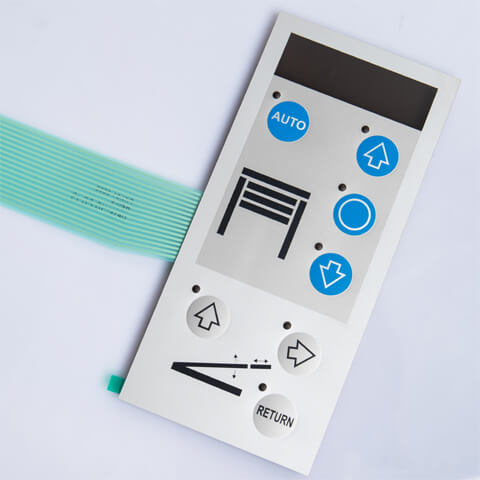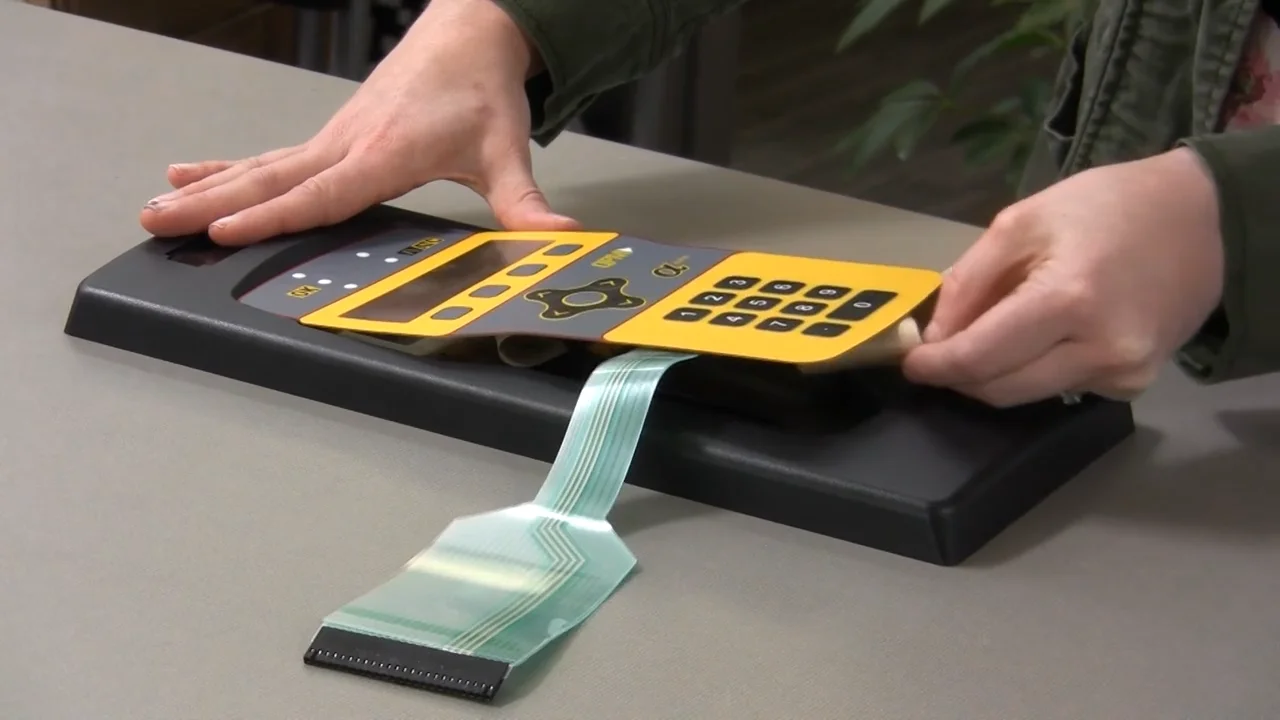Check Out Various Kinds Of Membrane Switch Technologies for Your Demands
Check Out Various Kinds Of Membrane Switch Technologies for Your Demands
Blog Article
How Membrane Switches Over Contribute to the Sturdiness of Electronic Control Panels
Membrane layer buttons play a crucial role in improving the durability of digital control panels, largely through their multi-layered building and construction which offers effective protection against ecological aspects such as wetness and dust. The absence of moving components substantially reduces the possibility of mechanical failings, making membrane changes ideal for demanding applications.
Interpretation of Membrane Buttons

Membrane layer buttons are designed to be thin and lightweight, making them suitable for applications where space is restricted. They can be produced in various forms, dimensions, and colors, supplying flexibility in style that fulfills visual and useful requirements. In addition, membrane layer switches can include numerous innovations, such as tactile comments and LED indications, boosting customer experience.
Because of their building and construction, membrane buttons are often resistant to dust, dampness, and general wear, contributing to their sturdiness popular environments. Their seamless layout not only assists in easy cleansing yet also minimizes the threat of mechanical failing, making them a preferred option for makers seeking trustworthy user interfaces in their digital control board.
Defense Versus Environmental Variables
The design of membrane switches naturally supplies a level of protection against various ecological variables, which is essential for preserving capability in tough conditions - Membrane Switch. These buttons are commonly built with layers of adaptable materials that protect inner elements from dampness, dirt, and impurities. By encapsulating the wiring, membrane layer switches over lessen the risk of brief circuits and corrosion, which can significantly hinder performance
In addition, using robust adhesives and sealants throughout production enhances their resistance to environmental difficulties. Membrane switches can endure exposure to chemicals and solvents, making them appropriate for sectors such as food handling and medical care, where health and tidiness are vital. Their seamless surface area style also protects against the accumulation of dust and germs, facilitating simpler cleaning and maintenance.
Temperature level fluctuations are another ecological worry, and membrane layer switches are crafted to operate effectively across a broad array of temperature levels (Membrane Switch). This flexibility ensures that control board continue to be operational in various settings, from commercial settings to customer electronics
Effect On User Interaction
User communication with electronic control panels is considerably influenced by the design and functionality of membrane buttons. These switches give a tactile interface that boosts the general customer experience, permitting instinctive navigating and control. Their responsive nature guarantees that individuals get prompt comments upon activation, which is essential for tasks needing precision and effectiveness.
Additionally, the smooth surface area of membrane layer changes assists in simple cleansing and upkeep, promoting user self-confidence in the integrity of the user interface. This tidiness is especially important in atmospheres where hygiene is critical, such as medical or food processing settings. Additionally, the small and lightweight design of membrane switches contributes to the visual charm of control panels, encouraging user engagement via a modern-day and streamlined appearance.
Moreover, the combination of visual components, such as published icons and backlighting, aids customers promptly determine functions, decreasing the learning contour related to new equipment. Therefore, individuals can operate tools more efficiently, causing increased performance and fulfillment. In recap, membrane switches play a critical role in boosting user interaction by combining performance, aesthetics, and ease of use, ultimately leading view website to boosted functional performance.
Layout Versatility and Customization
Layout adaptability and customization are crucial elements of membrane layer switches, making it possible for producers to customize electronic control board to particular applications and customer needs. This flexibility permits the combination of various style components, such as colors, graphics, and structures, which can boost the visual charm and customer interaction of the control panel.
Membrane layer buttons can be customized in dimension and shape, suiting a vast range of tools and applications, from industrial equipment to customer electronic devices. This convenience ensures that manufacturers can create intuitive user interfaces that straighten with individual expectations and functional needs. Additionally, the capacity to integrate one-of-a-kind features such as backlighting or tactile comments even more boosts functionality, permitting a much more interactive experience.
In addition, the production process for membrane changes sustains the fast prototyping of designs, making it possible for makers to repeat and fine-tune their principles quickly. This capacity not only speeds up the growth timeline but also guarantees that the final product satisfies details useful and aesthetic criteria.

Cost-Effectiveness and Long Life
Cost-effectiveness and long life are considerable advantages of membrane layer switches, making them an eye-catching alternative for makers and end-users alike. These buttons are typically more economical to create than conventional mechanical switches, mostly as a result of their simplified manufacturing processes and the decreased number of parts required. This expense advantage expands not just to preliminary production but also to long-term functional expenditures, as membrane buttons often call for less upkeep and have a reduced click site failing price.
Furthermore, the long life of membrane switches contributes to their total value. Built from resilient products, they are resistant to ecological variables such as moisture, dust, and chemicals, which can bring about early wear in other button kinds. The absence of moving components reduces mechanical failing, allowing membrane layer switches to maintain performance over prolonged periods.
This toughness is specifically useful in applications requiring consistent performance under requiring problems, such as clinical devices and commercial tools. Eventually, the combination of cost-effectiveness and long life makes membrane changes an economically practical selection for makers, providing trusted options that endure visit this website the examination of time while enhancing financial factors to consider.
Conclusion
To conclude, membrane switches significantly boost the longevity of digital control board via their robust building and safety functions. By properly protecting circuitry from ecological dangers and minimizing the danger of mechanical failing, these buttons make sure regular efficiency in requiring applications. The smooth design advertises health and simplicity of upkeep, while customization choices allow customized solutions for different requirements. In general, membrane changes represent a reliable and cost-efficient selection for improving the durability and capability of electronic control systems.
Report this page